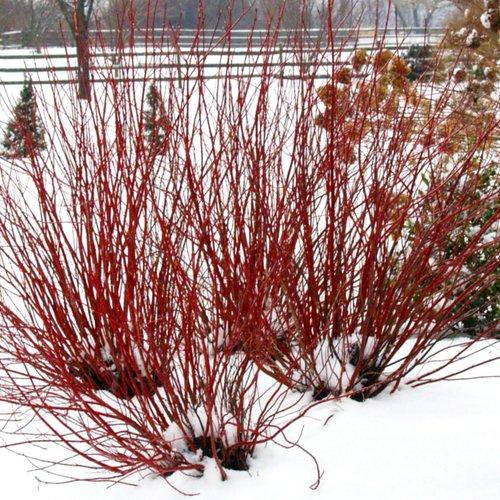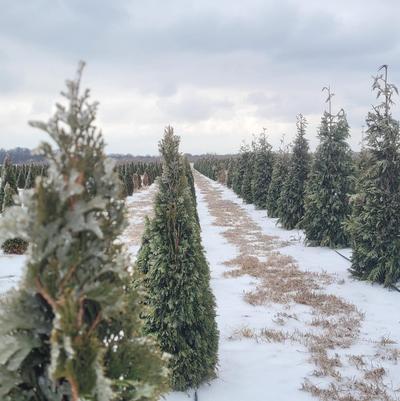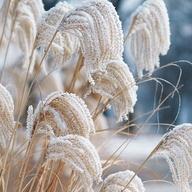Preparing Your Landscape for the Winter Season
Preparing your landscape for winter began with proper planting and continued with year-round support. Healthy plants are better equipped to fend off the stresses of winter. But there are specific tasks that can be critical to improve survival and keep your landscape in good shape. Efforts we make at this time may not seem as enjoyable as gardening at other times of the year, but they do ensure a rewarding spring. Here are 12 essential activities for a successful winter.

Preparing Your Landscape for the Winter Season
Helping your plants survive winter is actually a year-long endeavor. Healthy plants with strong root systems, sited well, and properly cared for, are much less vulnerable to the stresses of winter. When it eventually comes time to fend off the cold, healthy plants are much better equipped. Including plants native to your region is also a wise safeguard against plant loss.
Some of the most important tasks you can do for your garden are those performed before winter. Efforts we make at this time may not seem as enjoyable as gardening at other times of the year, but they do ensure a rewarding spring. Here are 12 essential activities for a successful winter.
-
Have Frost Protection on Hand - Have frost protection cloths and devices already on hand to employ them quickly on borderline-hardy plants, young plants and those recently planted in the fall. See our article “Frost vs. Freeze” for pointers to predict damaging cold weather, and “Protect Your Plants from Winter Damage” for more detailed information about frost cloths and other means to winter safeguard plants in your landscape.
-
Water - Be sure all trees and plants have been watered well going into winter before the ground freezes. Water should reach 12-24” into the root zone. This is one of the most critical activities to ensure survival over the winter for most deciduous and evergreen plants, and can be continued about monthly in winter when temperatures warm up over 40℉ for a period. Some succulents, bulbs and other plants which require highly-draining soils may need a dryer period especially if your winters tend to be wet. Watering early in the day before a predicted freeze will give plants time to take up water, and the moist soil will also retain more heat than when the soil is dry.
-
Leave Most Cleanup - Now is not the time for most cleanup, fertilizing or pruning. Discontinue most fertilizing and pruning after mid to late summer. Pushing new growth caused by these activities will delay the plant’s natural hardening-off process, making it more susceptible to early frosts. Seasonal dieback of natives and perennials can be left to harbor wildlife and beneficial insects, and will also help protect the rest of the plant from cold. Insulating snow will collect around plants that haven’t been cut back, protecting the area from colder temperatures. And if left alone, some plants exhibit an attractive winter appeal. This can readily be seen with dried ornamental grasses which glow and move in the wind. See “Gardening for a Charming Winter Landscape”.
-
Exceptions to delaying cleanup to spring - Diseased and insect-infested plants should be removed and disposed of outside your landscape to avoid overwintering problems that could show up again in the spring. Cleaning up debris at the base of fruit trees, especially mummified fruits, can be critical to stopping a disease cycle. Dying annuals could also be removed to make spring cleanup less confusing, especially if you have annuals in beds with perennials. A final late-season weeding to remove winter annuals which would flower and set seed the following spring will greatly reduce weeds. Plants with long, thorny canes, such as some bush-type roses, can have a minor trim to keep the plant from damaging itself in the wind.
-
Dig up Bulbs - Dig up the bulbs of plants that are too tender for your climate zone to remain over winter, and store them indoors above freezing. This will likely include such plants as caladiums, dahlias, cannas, tuberous begonias, calla lilies, elephant ears and gladiolus. Wait until the first frost has turned the leaves brown and gently dig up the bulbs or tubers, cutting away any remaining stems. Brush the soil off and allow them to thoroughly dry in an open, cool location for about a week. Label them, and pack them in a breathable container surrounded by newspaper or sawdust so they don’t touch each other. Store them below 45℉ but above freezing until they can be replanted in late spring.
-
Maintain Mulch Cover - Apply at least a 2-inch cover of shredded leaves, bark, compost or other mulch around cold-sensitive, young and newly planted material, fruiting plants and evergreen trees and shrubs (both needled and broad-leaf), to moderate temperature and moisture loss. Ornamental grasses, some Mediterranean plants and prairie plants that need well-draining soils may not do well with mulch as it can trap too much moisture and rot stems. Roses on the other hand may need extra protection by piling fresh topsoil or compost over the base of the plant to cover the graft union, followed by a 6- to 12-inch layer of straw, leaves, or other mulch in zones 6 and colder.
By moderating soil temperature changes, mulch can help maintain warmth in the soil but also reduce the likelihood of plants coming too quickly out of dormancy in warm spells. Moderating soil temperature also reduces soil heaving. By retaining soil moisture, mulch lessens the effect of drying winds and times when the ground is frozen. Keep the mulch at least several inches away from tree trunks to lessen potential disease and prevent rodents and other small pests from feasting on the trunk while hiding in the mulch.
-
Use Anti-desiccant Spray - Apply anti-desiccant spray to broad-leaf and needled evergreens. Sprays such as Wilt-Pruf provide a waxy barrier that can limit water loss by transpiration.
-
Install Tree Wraps - Tree wraps can protect young, thin-barked trees such as linden, maple, ginkgo, honeylocust, crabapple and redbud against chewing by rodents and rabbits and damage from sunscald and frost cracks. Wraps should be light-colored, paper-based and extend up to the lowest branch. Alternatively, latex paint can be used if applied early in the season when it’s warm enough to allow the paint to dry. Paint is not as aesthetically pleasing but will last a few years. Wraps should be removed in spring to allow for outward expansion of the trunk. Trees should only need to be wrapped the first 1-3 years after planting until the bark becomes hardened or furrowed.
-
Add Screens - Cold winds damage foliage and can kill an evergreen through loss of moisture. Screens can be configured from poles and burlap as protection against drying winds. They can partially encircle the plant, as long as they block the usual direction of the wind, but should be left open on top. This is proving to be a better method than completely wrapping the tree or shrub.
-
Bring Tropical Plants Indoors - Tropical plants, unable to cold harden like plants from colder regions, should be brought indoors if your winter temperatures fall into the high 40s; actually, damage can easily occur on some tropicals under 50℉. It’s always a good practice to inspect them for insects they may be harboring and to quarantine them away from your other houseplants for a couple of weeks. Plants that can develop cold hardiness may be able to stay outside. Refer to “Protect Your Plants from Winter Damage” for suggestions to protect outdoor container plants.
-
Winterize Irrigation and Sprinkler Systems - Remove irrigation timers and any device that won’t be regularly used in the winter months. If possible, shut the water off serving outdoor faucets and open the faucets to drain them. Water in irrigation pipes can be blown out with air compressors. Disconnect hoses and cover outdoor faucets with insulating faucet guards. Take the time to put hoses back in action if the temperature warms enough to water the landscape.
-
Provide Deer Protection - As food sources shrink during the winter and deer become hungrier, they may feed on plants they would normally leave alone. And early spring brings tasty new growth. Protect your landscape with a combination of deterrent sprays, milorganite, motion-activated devices and tall fencing.
This spring, as a green haze on twigs begins to capture your attention and browns and greys turn into lavish colors, you’ll be glad you made the effort to put these safeguards in play. Eventually, new plantings and young plants will likely require less protection and attention at maturity. But winterizing will always be a benefit to your landscape. And if you’re like me, you might enjoy pushing the zonal limits and trying plants outside your winter hardiness. It will just take a little more ingenuity to shelter them over the winter.

